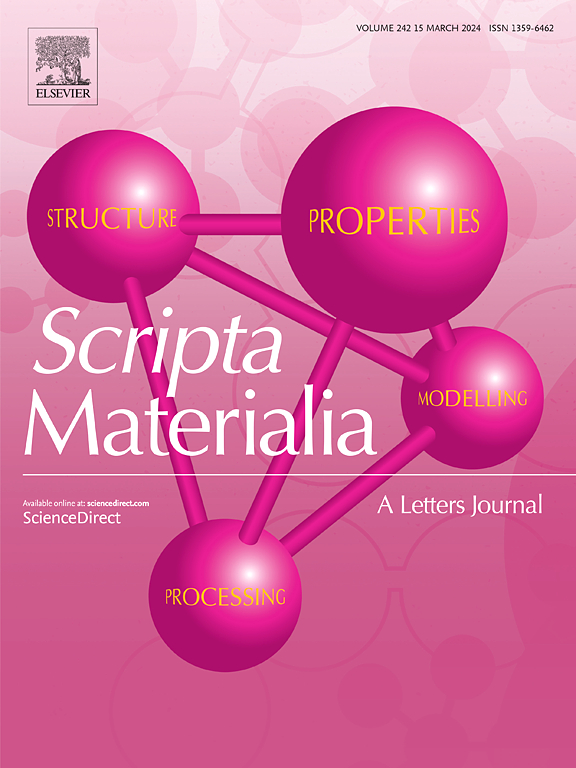超越动态霍尔-佩奇效应:微观应变分散的机械孪晶
IF 5.3
2区 材料科学
Q2 MATERIALS SCIENCE, MULTIDISCIPLINARY
引用次数: 0
摘要
机械诱导孪晶被认为是一种有益的变形微观机制,这主要是由于通过孪晶过程细化晶粒尺寸所产生的动态霍尔-佩奇效应。然而,在损伤起始强烈依赖于纹理的合金中,与机械诱导孪晶相关的取向变化也会产生有利的结果。为了证明这一点,我们采用基于微观结构的高分辨率原位数字图像相关(μ-DIC)技术,研究了钛合金中{101¯2}延伸孪晶的激活所调制的应变异质性及其宏观后果。我们的观察结果表明,在塑性早期(ε∼0.01),由于金字塔 I <c+a>滑移激活,形成了强烈的应变定位带。然而,随着{101¯2}孪晶的成核和扩展,这些条带的强度逐渐减弱。随着变形的进行,整个微观结构的应变分布变得更加均匀,这归因于孪晶扩展引起的应变分散效应。定量损伤分析表明,{101¯2}孪晶活化引起的应变分散可以增强微结构的抗损伤能力。本文章由计算机程序翻译,如有差异,请以英文原文为准。

Beyond the dynamic Hall-Petch effect: Mechanical twinning for microscopic strain delocalization
Mechanically-induced twinning is considered a beneficial deformation micro-mechanism, primarily due to the dynamic Hall-Petch effect arising from grain size refinement through twinning processes. Yet, in alloys where damage initiation is strongly texture-dependent, the orientation change associated with mechanically-induced twinning can also yield advantagenous outcomes. To demonstrate this, we employ high-resolution in-situ microstructure-based digital image correlation (μ-DIC) techniques to investigate strain heterogeneity modulated by the activation of extension twinning and its macroscopic consequences in a titanium alloy. Our observations reveal the formation of intense strain localization bands due to pyramidal I <c+a> slip activation in the early plasticity regime (ε∼0.01). However, the intensity of these bands diminishes as twins nucleate and propagate. As deformation progresses, the strain distribution becomes more uniform across the microstructure, attributed to strain delocalization effects caused by twin propagation. Quantitative damage analysis suggests that strain delocalization by twin activation can enhance microstructural damage resistance.
求助全文
通过发布文献求助,成功后即可免费获取论文全文。
去求助
来源期刊

Scripta Materialia
工程技术-材料科学:综合
CiteScore
11.40
自引率
5.00%
发文量
581
审稿时长
34 days
期刊介绍:
Scripta Materialia is a LETTERS journal of Acta Materialia, providing a forum for the rapid publication of short communications on the relationship between the structure and the properties of inorganic materials. The emphasis is on originality rather than incremental research. Short reports on the development of materials with novel or substantially improved properties are also welcomed. Emphasis is on either the functional or mechanical behavior of metals, ceramics and semiconductors at all length scales.
 求助内容:
求助内容: 应助结果提醒方式:
应助结果提醒方式:


